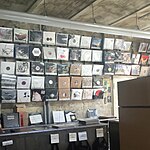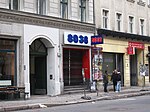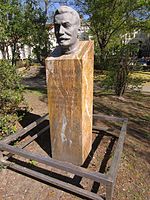Kottbusser Tor (Berlin U-Bahn)

Kottbusser Tor (German pronunciation: [ˌkɔtbʊsɐ ˈtoːɐ̯] (listen)) is a Berlin U-Bahn station located on lines U1, U3, and U8. Many Berliners use the affectionate term Kotti (German pronunciation: [ˈkɔti] (listen); see Berlin dialect). It is located in central Kreuzberg. The area has a bad reputation for the relatively high, mainly drug-related crime rate, instances of which have recently become quite rare in most other parts of the district. The original Kottbusser Tor was a southern city gate of Berlin; the road through the gate led via the Neukölln suburb to the town of Cottbus. Trivia - K and missing h (Cotbusser Thor) rely to a language reform at begin of 20th century. See e.g. Stralauer T(h)or, or Cölln and Neukölln.
Excerpt from the Wikipedia article Kottbusser Tor (Berlin U-Bahn) (License: CC BY-SA 3.0, Authors, Images).Kottbusser Tor (Berlin U-Bahn)
Skalitzer Straße, Berlin Kreuzberg
Geographical coordinates (GPS) Address Nearby Places Show on map
Geographical coordinates (GPS)
| Latitude | Longitude |
|---|---|
| N 52.499166666667 ° | E 13.418055555556 ° |
Address
Skalitzer Straße
10999 Berlin, Kreuzberg
Germany
Open on Google Maps









